The observatory has hosted a variety of lectures. You can view videos of selected presentations by clicking on an image. Please help us continue this series online by donating to the observatory.
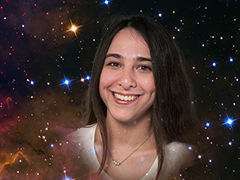
Alexandra Yep – Young Stars Amid External Radiation and Colliding Associations. Ms.Yep is a poet turned astronomer. She first shared her research of The Gum Nebula and young stars as part of The Martz-Kohl Observatory Lecture Series in October, 2020. The observatory was honored to host her Ph.D. dissertation defense on 07 July 2021. As part of her work, she discovered several star clusters in the Gum Nebula which are now known as Yep-1, Yep-2 and Yep-3 and is only the second woman to have earned this naming honor. She also deduced that two distinct stellar associations are in the process of colliding. While her dissertation is about 250 pages of detailed mathematics, observations, charts and simulations, Ms. Yep managed to condense the highlights into an hour presentation. © 2021 Alexandra Yep
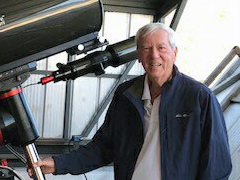
Ted Wolfe – Armchair Stargazing: Remote Astro Imaging in Chile. Ted returned to the Martz-Kohl Observatory this year, in person, with an exciting video tour prepared in collaboration with National Geographic Magazine as well as some of his latest astro images. The videos focused on a trip to his observatory in the Atacama Desert in northern Chile which he can operate remotely from anywhere in the world. But as always, Ted’s ultimate goal is the heavens. His spectacular images of deep space take viewers along to explore the whole universe without ever leaving our planet. He has been an astrophotographer since 1998, when he constructed one of the first remote, robotic, amateur observatories in southern Florida. Ted and his wife Nancy spend winters in Florida and summers at the Chautauqua Institution, here in Western New York. © 2021
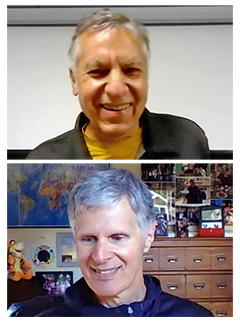
Dan Gray and Howard Banich – Upgrading the Martz-Kohl Observatory & Achieving Diffraction Limited Resolution. Dan Gray is the founder of Sidereal Technology, a cutting edge company focused on developing advanced telescope control systems. Dan Gray has been involved in astronomy, telescope optics and mechanics since the early 80s. Today, Dan continues to create and enhance hardware and software and install systems around the world. Howard Banich is an avid amateur astronomer. He is a Contributing Editor for Sky & Telescope Magazine and has had articles published in Amateur Astronomy Magazine and Amateur Telescope Making Journal. He is the designer and owner of several telescopes, including a 28 inch, f/4 altazimuth Newtonian. This talk illustrates upgrades being installed at the Martz-Kohl Observatory. Dan and Howard also explain and demonstrate how using the latest CCD cameras, taking many exposures, and processing with special software, astronomers are able to approach the diffraction limit of their telescope optics and contribute to citizen science. © 2021
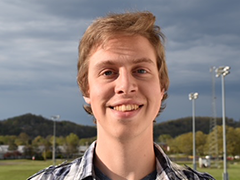
Peter Williams – Machine Learning: Concepts and Use Case in Mapping the Universe. Peter is a Busti, NY local who graduated from State University of New York’s Jamestown Community College (SUNY JCC) in 2016. He went on to earn a Bachelor’s degree in theoretical physics from SUNY Geneseo and a Master’s degree from The Ohio University. He now teaches physics and engineering courses at SUNY JCC. This presentation provides an overview of the types of machine learning algorithms, how they work, and many of their applications. It showcases the use of a neural network to assist the Dark Energy Spectroscopic Instrument (DESI) collaboration in their mission to create the largest ever 3D map of the universe – a task Peter contributed to while in grad school. © 2021
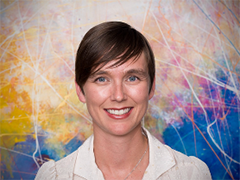
Dr. Robin Elgart – Space Radiation: It’s Everywhere We Want to Be! Dr. Elgart received her B.S. in Microbiology from the University of California at Santa Barbara and her Ph.D. in Biomedical Physics from the University of California at Los Angeles. Before joining NASA’s Human Research Program as the Space Radiation Element Scientist in April 2020, she served as a subject matter expert specializing in space radiation health risks for the NASA Space Radiation Analysis Group as well as a Space Environment Officer for Mission Control Center – Houston. In this talk, Dr. Elgart provides an overview of the space radiation environments, the associated human health risks, and how the Space Radiation Element is actively pursuing a data-driven tactical approach to space radiation protection. © 2021
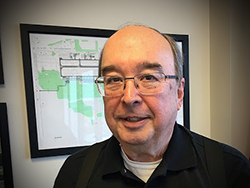
Donn Starkey – The Science of Variable Stars. Donn Starkey has authored over 70 research publications in astronomy and has been cited in over 1,500 publications. He is a council member of the American Association of Variable Star Observers, He has a master’s degree in Astronomy as well a bachelor’s degree in Biology and Chemistry. This webinar explains how stars develop and why some stars spend part of their lifespan being variable stars. Variable stars are stars that change brightness. These strange stars can seem to blink from bright-to-dim, or even on-and-off in brightness by a thousandth of a magnitude (how bright a star looks) to as much as twenty magnitudes brighter and dimmer over periods of a fraction of a second to years, depending on the type of variable star. © 2021
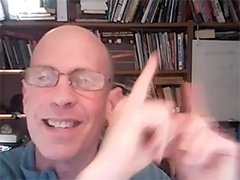
Tom Field – Astronomical Spectroscopy: You Can Almost Touch The Stars. Tom Field has been a Contributing Editor at Sky & Telescope Magazine for the past 7 years. He is the author of the RSpec software (www.rspec-astro.com) which received Sky & Telescope Magazine’s “Hot Product” award in 2011. Despite great distances, astronomers have learned an enormous amount about stars. How? The most common method to study the stars is called spectroscopy, which is the science of analyzing the colorful rainbow spectrum produced by a prism-like device. This talk, with lots of interesting examples, shows you what it’s all about and helps you understand how spectroscopy is used. © 2021
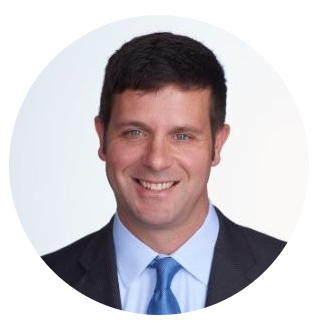
Dr. John Plumb – Space Traffic Management: Preventing Satellite Collisions in Space. Dr. John Plumb has served as a US Navy submarine officer, as a science and military adviser in the US Senate, as an official for missile defense, nuclear weapons, and space policy in the Pentagon, and on the National Security Council staff at the White House. He currently works as the head of government relations for the Aerospace Corporation, the only Federally Funded Research and Development Center (FFRDC) dedicated to the space enterprise. Low earth orbit (LEO) is increasingly congested with satellites and debris. This talk by Dr. John Plumb examines the scope of the problem and potential solutions to reduce the risk of collisions and preserve access to space. © 2020

Alexandra Yep – Young Stars in the Tumultuous Gum Nebula. Alexandra Yep is a poet turned astronomer. She is now pursuing her Ph.D. at Georgia State University, researching young stars in a moderate radiation environment. Stars are not born in isolation. They are born together in a cluster of hundreds or even thousands of stars. Ms. Yep seeks to answer these questions: How are stars and their young planets influenced by neighboring stars? How are clusters of stars influenced by neighboring clusters? © 2020

Walter W. Pickut – On the International Space Station, What are the Russians Up To? Walter W. Pickut is the contributing editor at the Jamestown Gazette, an author, and an investigative reporter. He has earned BS degrees in biology and in communication, an MS degree from Fairleigh-Dickenson University in NJ, and graduate training in mass communication at SUNY Buffalo. Having recently completed extensive studies in Soviet Cold War espionage, Walt now finds this investigation of Russian cosmonauts on the International Space Station very revealing. © 2020
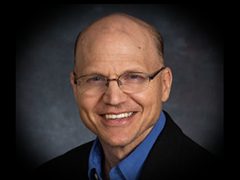
Dr. Darren Williams – Taking the Temperature of an Extrasolar Planet. Dr. Williams is a professor of Astronomy and Astrophysics, along with planetary science, at the Penn State Behrend Campus in Erie, Pennsylvania. Dr. Williams discusses how and what we know about extrasolar planet temperatures as well as the latest news in the field of exoplanets. © 2020
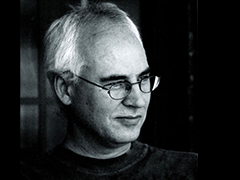
Dr. James Spann – Overview of the Heliophysics missions and their involvement in the NASA manned missions. Jim Spann, PhD, is the Space Weather Lead, Heliophysics Division at NASA. He has worked since March of 2019 at The Science Mission Directorate, Heliophysics Division of NASA where they study the nature of the Sun and how it influences the nature of space. Space weather can affect our astronauts, communication, satellites, and power grids. © 2020
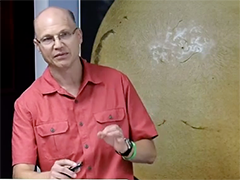
Dr. Darren Williams – Astronomical Contributors to Climate Change. Dr. Williams is a professor of Astronomy and Astrophysics, along with planetary science, at the Penn State Behrend Campus in Erie, Pennsylvania. As a teen, Dr. Williams started his future career endeavors as an astronomy hobbyist at the Martz-Kohl Observatory. Currently, Dr. Williams is studying the dynamics surrounding the orbits of the planets and moon as well as the evolution of the solar system. © 2019

Laurie Abadie – Lunar Astronauts: Preparing America’s Next Moon Landing Crew. Laurie Abadie is a human space flight specialist with NASA. Her title is Deputy Manager for Communications and she is part of a team for NASA’s Human Research Program, now working to develop the moon landing crew for the planned 2024 U.S. moon landing expedition. © 2019
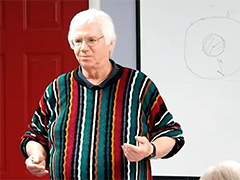
Mike Stafford – The Birth and Death of Stars. Mike Stafford is a former instructor of physics at Penn State Behrend. He has also taught at Mercyhurst and is currently an adjunct instructor of physics at Gannon University. Outside of physics, he is a private pilot, licensed parachute rigger and currently inactive expert parachutist. He is also an Extra Class ham radio licensee. © 2019